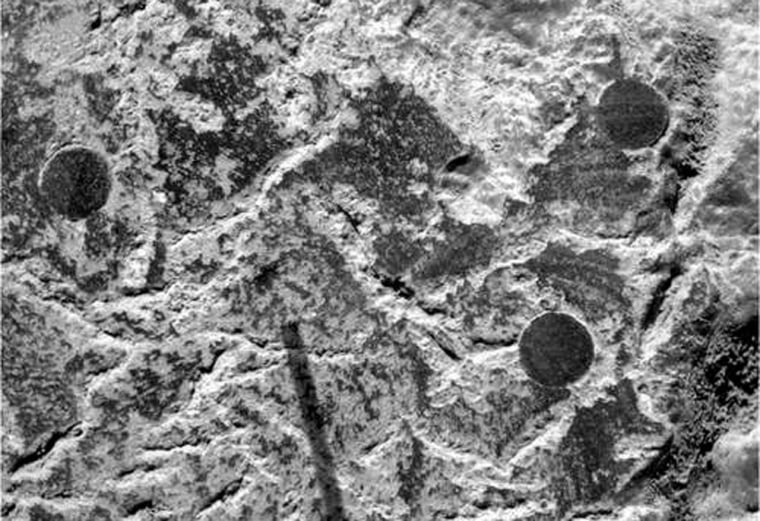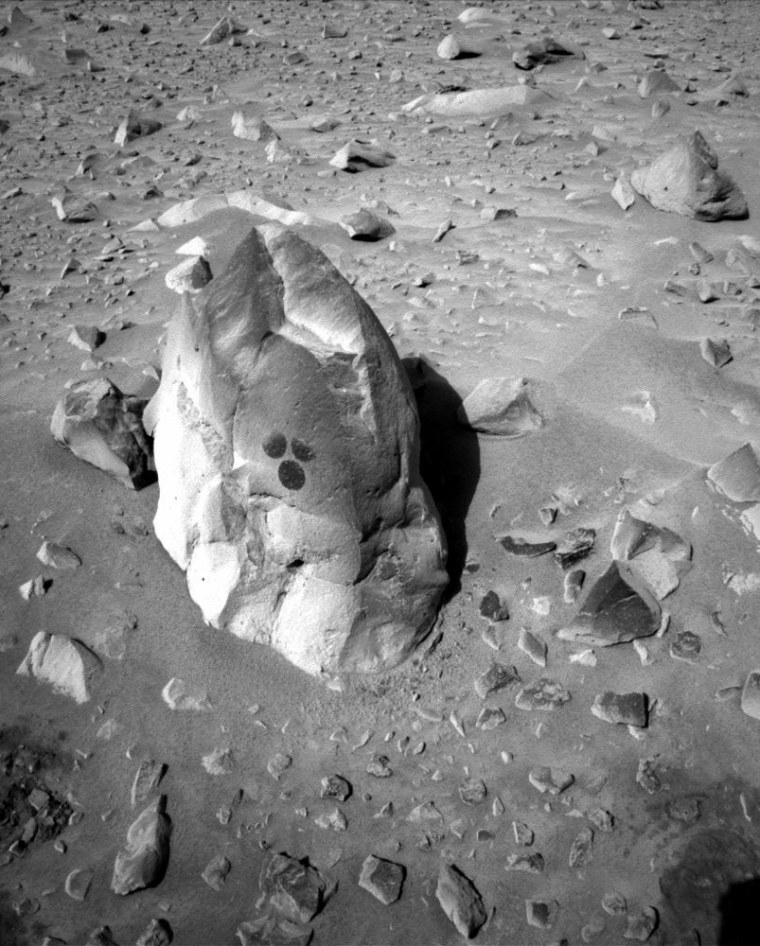The rover Spirit dusted off three separate areas of a Martian rock dubbed "Humphrey," NASA said Sunday, as it prepared to grind into the object to determine its composition.
When the six-wheeled robot cleaned a rock named Adirondack in February, it scrubbed just one spot. This time, Spirit cleaned three spots for possible drilling, NASA said in a recorded statement. Scientists hope to cut into Humphrey and inspect its materials in the coming days.
Spirit was delayed at one point because of problems with safety software, but engineers made quick adjustments, allowing the robot to reach its destination at the rock, NASA said.
Scientists could investigate another nearby rock or continue to Bonneville crater, less than 330 feet (100 meters) away. They expect the rover will reach the crater's rim and peer into it for the first time in mid-March.
Meanwhile, Spirit's twin rover Opportunity examined a patch of rock at an outcrop dubbed "El Capitan." The upper part of the outcrop, known as Guadalupe, has been the rover's primary interest for the past couple of days. Over the weekend, the rover's rock abrasion tool drilled a shallow hole into Guadalupe, its microscopic imager observed the fine textures of the rock, and its spectrometer examined the newly exposed interior.

The images showed perfect dark circles within the rock, representing BB-sized spherules, or "Martian blueberries," that were ground down to their centers by the abrasion tool. Also, the rover captured a new view of the eastern horizon beyond the crater where Opportunity is working.
NASA sent the rover pair on an $820 million mission to look for geologic evidence that Mars was once a wetter place that might have been hospitable to life. The rovers are roughly halfway through their scheduled 90-day primary mission, but the mission teams say they expect the probes to be working for much longer than 90 days.
So far, the rovers have found intriguing geological data, but scientists are still cautious about announcing conclusions.
